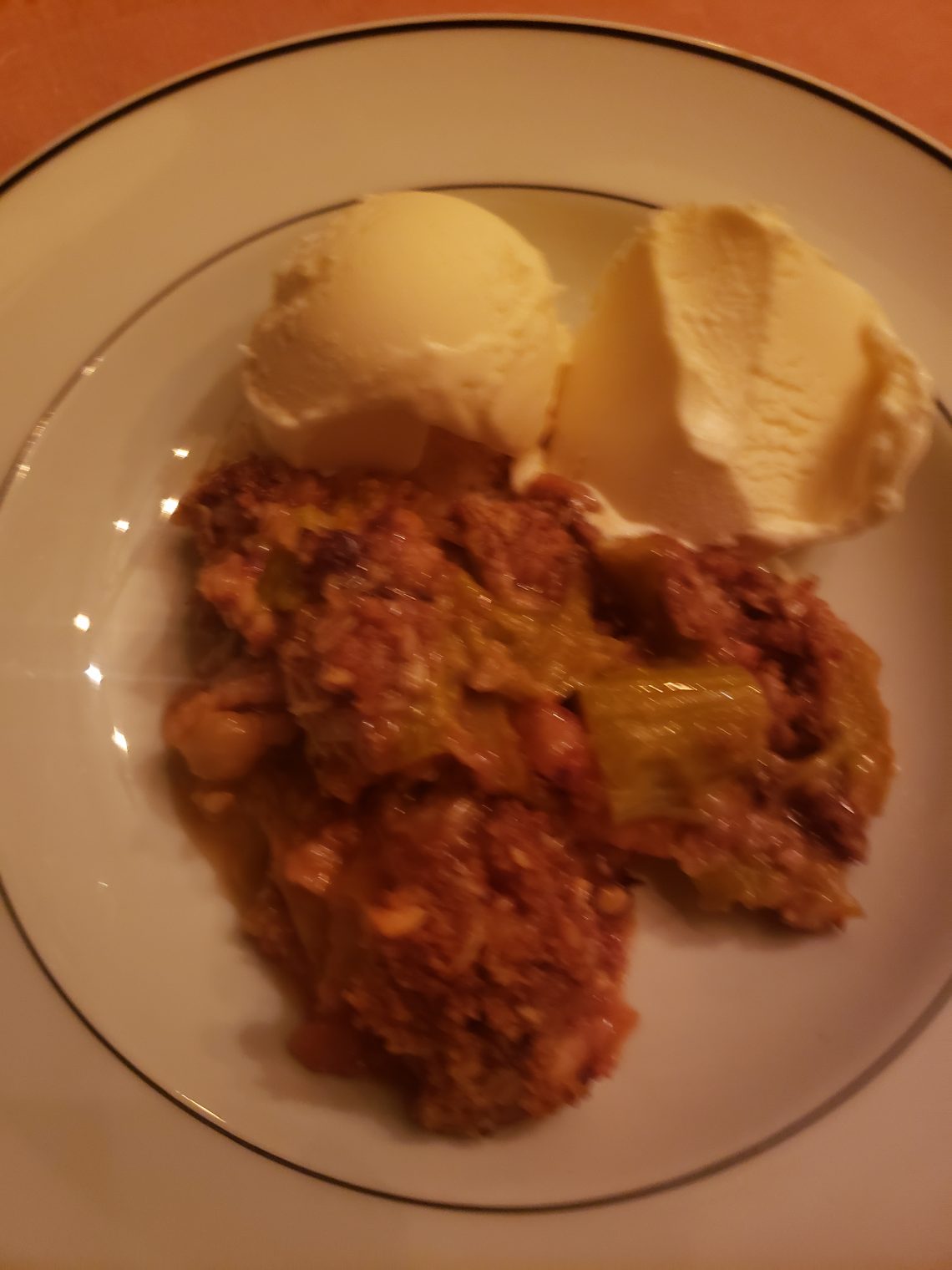
Don’t Dessert the Rhubarb!
Rhubarb season has begun. If you’re like me, you don’t necessarily choose rhubarb with all the other choices available. On the farm, we had a small patch of rhubarb when I was growing up, and my mother would occasionally dispatch one of us kids out to harvest a few spears. An occasional strawberry-rhubarb pie was most common, but for us, like most American families, this tart stalk was not a frequent ingredient. In fact, Americans can’t even agree on what rhubarb is.
How do you define rhubarb?
From a botanical perspective, rhubarb is a vegetable. But in America, it’s legally a fruit. In 1947, a New York court ruled that it was a fruit, a declaration that saved businesses that imported rhubarb from spending more money on taxes. Only in America.
The plant was native to Asia where the Chinese valued the roots as a medicine. The name came from the ancient Greeks who named it rha barbaron, a combination of words meaning “not from these parts.” Barbaron, from the same word that gave us barbarian, and Rha, from the ancient Greek name of the Volga River, led scholars to suspect that the Greeks imported it using that particular Russian waterway.
Of course, Americans also have another use for rhubarb: as a term for a quarrel or a dust-up. It was popularized by Brooklyn Dodgers sportscaster Red Barber. But it might have originated with another New York sportswriter from Brooklyn, where mothers would give their kids rhubarb sandwiches that were weaponized in local food fights. There’s also a theatrical rhubarb: In the late 1800s, British actors, when crowd scenes required a murmur, would mumble “rhubarb” to each other. Of course, none of this helped the perception of the unfortunate plant, which is too bad.
Beyond dessert
I figure that rhubarb must be more than a pie ingredient or baseball slang. While we might not be so familiar with other uses, the vegetable, if I may call it that, can be roasted, sauteed, stewed, or pureed, and has some great uses as an ingredient in main dishes. It pairs especially well with pork because the acidity of the rhubarb cuts the richness of the meat, as in this Pork Loin with Rhubarb and Balsamic Vinegar. Or you could just roast the pork loin for sandwiches and top it with a rhubarb chutney. Same result. It even pairs with scallops.
To learn where rhubarb became a foodstuff, places like the Middle East offer lessons. It is valued for its ability to cleanse the blood and purify the system. Take this simple Kurdish rhubarb braise, which makes use of aromatic herbs, split peas, tomato, and saffron. Or this simple Persian stew with lamb, rhubarb, parsley, and mint. And here’s an Indian approach with green mung beans (dahl), chopped tomatoes, rhubarb, and ginger.
So, take advantage of the possibilities for this ancient vegetable. Last night, Mrs. Farmboy made rhubarb crisp for dessert (photo above). But what about you? Do you have a recipe for rhubarb?
To comment, please click on “Read in Browser” or on the headline to view the blog on the website. You can log in and comment at the end of the blog to share your thoughts and start a discussion.
If you’d like to share the blog, click on the Facebook icon or one of the others. Thanks!





One Comment
Robin F. Lawson
I used toasted hazelnuts instead of pecans in the rhubarb crisp, which turned out to be a good complement. With just 1/4 cup sugar, it was a little tart, but everyone was enthusiastic – even those who eschewed the vanilla ice cream. So wonderful to host a little dinner party and have an excuse to make dessert!